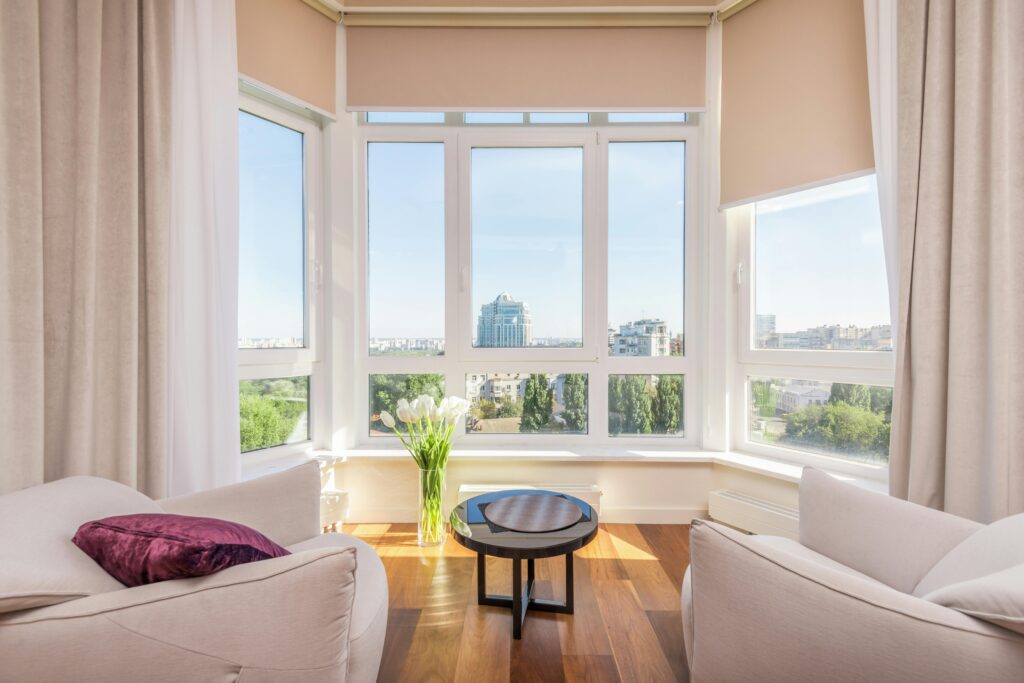Lighting is a transformative element in interior design, especially in the living room, where activities range from reading and relaxing to entertaining guests. The right lighting setup not only enhances the aesthetic appeal of your space but also impacts mood, functionality, and the overall ambiance. Understanding the different types of lighting and how to layer them can elevate your living room from ordinary to extraordinary. Let’s explore lighting solutions that cater to every aspect of living room functionality, from ambient to task lighting, and how to harmoniously integrate them into your space.
Contents
Ambient Lighting: Setting the Base Tone
Ambient lighting, or general lighting, provides a uniform level of light throughout the room. It’s the foundation upon which you build your lighting scheme. The goal is to create a comfortable level of brightness without glare or harsh shadows.
Ceiling Fixtures: Chandeliers and Flush Mounts
Ceiling fixtures, such as chandeliers and flush mounts, serve as a primary source of ambient light. They are central fixtures that can also act as a statement piece. Choose a design that complements your living room’s style—modern, traditional, or eclectic.
Recessed Lighting: Subtle and Effective
Recessed lighting fixtures, when placed strategically, can illuminate the entire room evenly. They blend seamlessly into the ceiling, offering a clean, streamlined look. Use LED bulbs for energy efficiency and longer life span.
Task Lighting: For Focused Activities
Task lighting is crucial in areas of the living room where specific activities require focused light, such as reading, sewing, or working on hobbies.
Table and Floor Lamps: Versatile and Stylish
Table and floor lamps are perfect for creating concentrated light for tasks. Position them next to seating areas, like sofas and armchairs, to provide ample light for reading or knitting. These lamps also offer an opportunity to inject style and personality into your space.
Swing Arm Lamps: Flexible and Adjustable
Swing arm lamps are excellent for spaces where you need adjustable lighting. Mounted on walls or placed on desks, their arms can be extended or retracted to direct light exactly where it’s needed, making them ideal for reading nooks.
Accent Lighting: Highlighting and Accentuating
Accent lighting is used to highlight architectural features, artwork, or specific areas of the living room, creating visual interest and drawing the eye to these points.
Track Lighting: Directional and Dynamic
Track lighting offers the flexibility to direct light precisely where it’s needed, making it perfect for accentuating artwork, sculptures, or architectural details. It can be adjusted and redirected as your layout or decor changes.
Picture Lights and LED Strips: Subtle Highlights
Picture lights mounted above artwork or LED strips placed behind furniture can add a dramatic effect, subtly highlighting these elements without overpowering the space.
Decorative Lighting: The Finishing Touch
Decorative lighting serves as both a light source and a piece of decor, adding character and style to the room.
Pendant Lights: Statement Pieces
Pendant lights, especially when grouped or used as a singular statement piece over a coffee table, can add a focal point to the room. Choose designs that reflect your living room’s aesthetic for a cohesive look.
Table Lamps: Artful Objects
Table lamps, beyond their practicality, can serve as artful objects that contribute to the decor. Select lamps with interesting shapes, colors, or textures to add another layer of interest to your living room.
Layering Lighting: Creating Harmony
The key to a well-lit living room is layering different types of lighting. Here’s how to achieve balance and harmony:
- Start with Ambient Lighting: Ensure your space has a base layer of light that’s comfortable for general use.
- Incorporate Task Lighting: Identify areas where activities occur and introduce task lighting to support these actions.
- Add Accent Lighting: Use accent lighting to highlight decor or architectural features, adding depth and dimension to the room.
- Finish with Decorative Lighting: Choose decorative lighting pieces that complement the room’s style and serve as conversation starters.
Smart Lighting: Flexibility and Control
Smart lighting systems offer unparalleled control over your living room’s ambiance. With the ability to adjust brightness, color temperature, and even light color, these systems can transform your space with the touch of a button or a voice command. They’re especially useful for creating presets for different times of day or activities, ensuring your lighting is always perfectly attuned to your needs.
The right lighting scheme can make your living room a versatile space that adapts to your lifestyle, whether you’re hosting a lively gathering, enjoying a quiet evening of reading, or simply relaxing with family. By understanding the roles of ambient, task, accent, and decorative lighting, you can create a layered lighting plan that enhances both the functionality and the aesthetic appeal of your living room. Remember, lighting is not just about visibility; it’s about creating an atmosphere that reflects your style and meets your needs. With thoughtful planning and a creative approach, your living room can shine in its best light.

